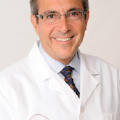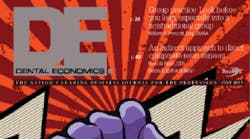Dentistry was named the No. 1 best job by U.S. News & World Report earlier this year. So why is it that being a dentist doesn't always feel like the best job? Louis Malcmacher, DDS, MAGD, takes a look at the evidence and offers some tips to improve your job satisfaction.
U.S. News & World Reportpublished its 2017 “100 Best Jobs” list earlier this year, and guess which job was first on the list? Dentist! This is great news, and we should be celebrating. But if you talk to dentists every day like I do, one question comes up over and over again: why is it that being a dentist doesn’t feel like the best job to those who practice?
Here are some quotes from the article:
“Dentists are very well compensated for the services they provide. According to the Bureau of Labor Statistics (BLS), dentists earned a median salary of $152,700 in 2015. The best-paid earned more than $187,200, while the lowest-paid earned less than $68,310.” (1)
“Because more people want cosmetic treatments like teeth whitening to attain pearly whites, the demand for dentists is growing. The BLS predicts employment growth of 18% between 2014 and 2024, with 23,300 new openings. A comfortable salary, low unemployment rate, and agreeable work-life balance boost [dentists] to a top position on our list of best jobs.” (1)
Do you have “an agreeable work-life balance?” Or are you working long hours and feeling stressed every day you walk into the office? Do you love or hate the mix of procedures that you do every day?
I lecture to thousands of dentists every year, and I can tell you (anecdotally) that most are not making a comfortable salary. Many of them are making much less than $150,000 a year. Many dentists have very high levels of stress, are completely bored with the dentistry they perform, and are feeling the pressures of the office more than ever.
But there’s another large group of dentists that I interact with every day—the 10,000-plus dentists who are American Academy of Facial Esthetics (AAFE) members, who have taken AAFE live-patient courses in Botox, dermal fillers, PDO (polydioxanone) thread lifts, TMJ and orofacial pain trigger-point therapy, and dental sleep medicine. As a membership organization that teaches skill-based procedures, we have the advantage of being able to survey these members from time to time to find out what kind of financial impact these new services have made on their practices.
Table 1 illustrates what we’ve found from the AAFE member survey to date. Note that the members performed the services for a year or more prior to completing the survey so we could see the impact of these services once integrated into their offices. As with any averages, some AAFE members were doing less of these services per year, while others were doing more.
Now let’s figure out what the actual profit was for these procedures. The first thing to note is that Botox and dermal filler procedures require significantly less time than most dental procedures, and they do not require a capital investment or lab fee. The injectables are the only cost related to these procedures. While the cost is significant, the dental practitioner is directly compensated for the amount of injectable used. Dental sleep medicine does have a very small capital investment for a monthly rental of the STATDDS bruxism and sleep apnea home monitor, as well as a lab fee for the appliance.
Think about all of the extra capacity you have in your office every day (i.e., the empty chair time and team members sitting around) that could be filled with the Botox and dermal filler procedures patients want. In the United States, nearly 30 million people suffer from obstructive sleep apnea—and you already see many of those patients now! (2)
I can tell you firsthand that AAFE members are among the happiest, most accomplished, and well-compensated dental professionals with salaries significantly higher than the BLS statistics. They love what they do, are never bored, and are excited to go to the office every day. We truly can have the best job in the United States!
Author's note: Go to FacialEsthetics.org to sign up for a free monthly e-newsletter or to access information about live-patient Botox and dermal fillers training, frontline TMJ and orofacial pain training, frontline bruxism therapy, dental sleep medicine, and Medicare and medical insurance for every dental office.
References
1. The 100 best jobs. U.S. News & World Report website. http://money.usnews.com/careers/best-jobs/rankings/the-100-best-jobs. Published January 11, 2017. Accessed January 12, 2017.
2. Obstructive sleep apnea. American Academy of Dental Sleep Medicine website. http://www.aadsm.org/sleepapnea.aspx. Updated August 7, 2015. Accessed January 12, 2017.
Louis Malcmacher, DDS, MAGD, is a practicing general dentist and an internationally known lecturer and author. Dr. Malcmacher is the president of the American Academy of Facial Esthetics (AAFE) and a consultant for STATDDS. Contact him at (800) 952-0521 or [email protected].
For the most current dental headlines, click here.
About the Author

Louis Malcmacher, DDS, MAGD
Louis Malcmacher, DDS, MAGD, is a practicing general dentist and an internationally known lecturer and author. He is the president of the American Academy of Facial Esthetics (AAFE). You can contact him at (800) 952-0521 or [email protected]. Go to facialesthetics.org for information about live-patient Botox and dermal fillers training, solid-filler PDO thread lifts, frontline TMJ and orofacial pain training, dental sleep medicine, bruxism therapy and medical insurance, and to sign up for a free monthly e-newsletter.

